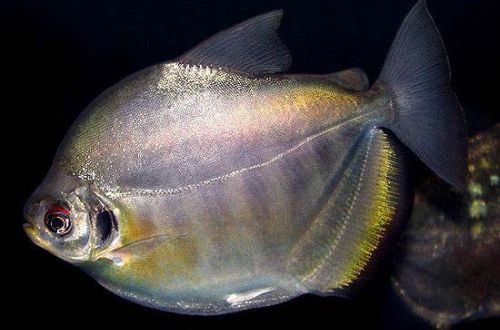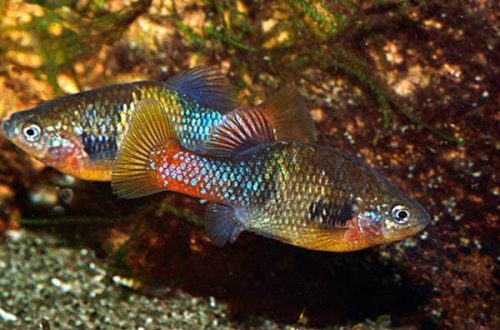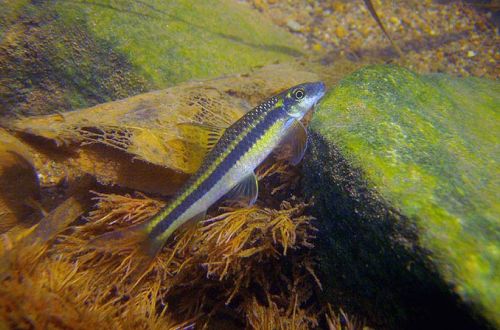
Mylossoma keelbelly
Mylossoma keel-bellied, scientific name Mylossoma duriventre, belongs to the family Serrasalmidae (Piranidae). The fish is native to tropical and subtropical South America. It is found in the Amazon, Orinoco and Paraguay and Paraná river basins. Thus, the natural habitat includes vast expanses from Venezuela along Brazil to Paraguay and the northern regions of Argentina.

Contents
Description
Adults reach a length of up to 25 cm and a weight of about 1 kg. The fish has a high flattened laterally disc-shaped body. The front part of the body – the keel – is noticeably enlarged, making the keel-bellied Mylossoma look like a giant version of the popular Hatchetfish.
The color is dark silver or light with yellow tints – depends on the age and conditions of detention. Juveniles have dark vertical stripes on the sides of the body. Fins and tail are translucent. The anal fin may have red tints.
Brief information:
- The volume of the aquarium – from 300 liters.
- Temperature – 22-28°C
- Value pH — 6.0–7.8
- Water hardness – up to 20 dH
- Substrate type – any
- Lighting – subdued
- Brackish water – no
- Water movement – light or moderate
- The size of the fish is up to 25 cm.
- Nutrition – plant-based feed
- Temperament – peaceful
- Keeping in a group of 4-5 individuals
Maintenance and care, arrangement of the aquarium
The optimal size of the aquarium for a group of 4-5 fish starts from 300 liters. The design is arbitrary, subject to the availability of places for shelters, for example, in the form of snags. The lighting is subdued.
Being a “vegetarian” will damage the soft parts of plants, and in some cases completely eat away the vegetation cover. It is recommended to use artificial green spaces, or try to place plants with hard leaves, such as anubias.
In long-term housing, it is important to ensure high water quality, i.e. to prevent the accumulation of organic waste (feed residues, excrement). To do this, it is necessary to regularly replace part of the water with fresh water, combined with cleaning the soil with a siphon, and ensure the uninterrupted operation of the filtration system.
Keelbelly mylossoma is able to adapt to a relatively wide range of pH and dH values, which makes water treatment easier for the aquarist.
Food
Fry and young fish mainly feed on aquatic invertebrates (crustaceans, insect larvae, worms, etc.), with age, plant leaves, fallen fruits, and seeds become the basis of the diet.
Accordingly, the food in the aquarium is selected based on the age of the fish. In the aquarium, juveniles can eat universal food. If there are no stripes on the body, this is an adult, which needs to be fed with food based on plant components (algae, vegetables). Many manufacturers produce special foods for these fish in the form of flakes and pellets. It is worth diversifying the diet with conventional feeds containing protein supplements, as well as live or frozen bloodworms, brine shrimp.
Behavior and Compatibility
Young and adult Mylossoms prefer to be in a pack rather than alone. It is recommended to purchase a group of 4-5 individuals. Peacefully tuned to other fish of comparable size. Despite a plant-based diet, smaller tankmates can be accidentally eaten.
Fish diseases
Being in a suitable habitat and a balanced diet minimizes the risk of disease. In turn, dirty water and poor nutrition negatively affect the body of the fish, reducing immunity and making the fish susceptible to environmental infections.
When the first symptoms appear, it is necessary to check the composition of the water and the quality of the feed. Having eliminated the problems in the content, proceed to treatment. Read more about symptoms and treatments in the Aquarium Fish Diseases section.





